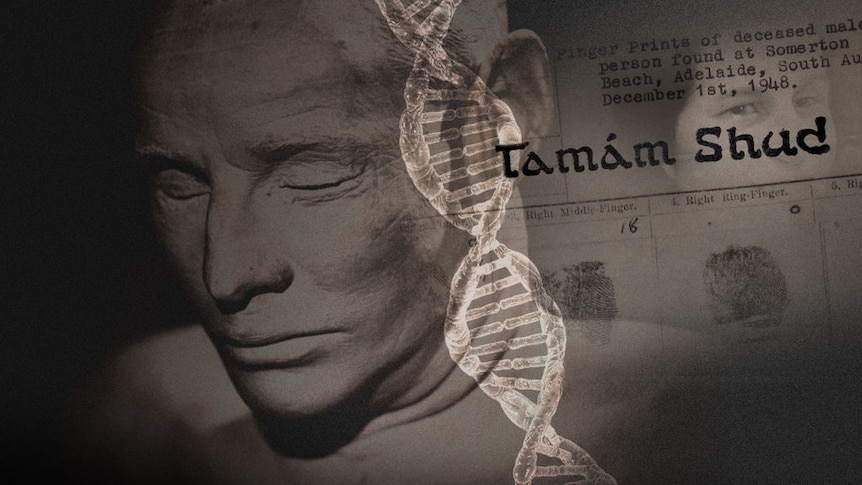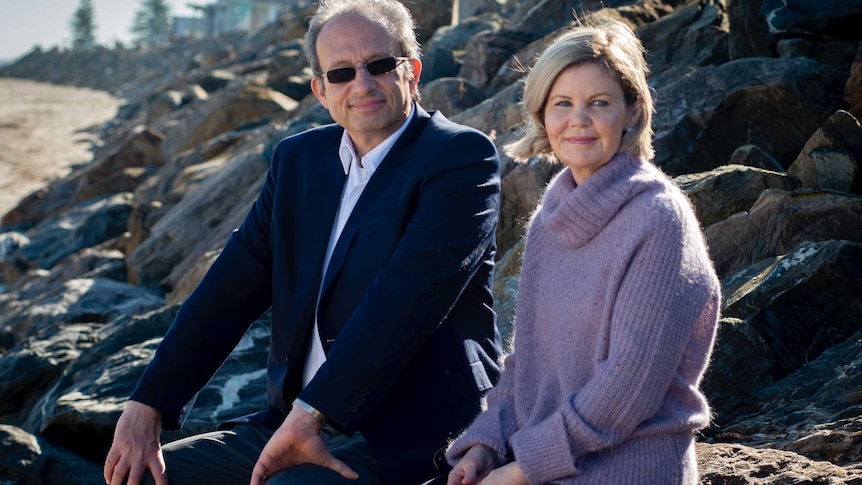When news articles refer to amateur sleuths who’ve dedicated time and effort to investigating the Somerton Man mystery, they’re referring to people like Nick Pelling.
The 57-year-old London-based computer programmer, author and researcher has never set foot in Adelaide, let alone on Somerton beach.
But that hasn’t stopped him from pursuing the case with the tenacity that one would expect from someone with his skills.
His blog Cipher Mysteries is a testament to his capacity to trawl through undigested records like those on Trove, the National Library of Australia’s freely accessible digital archive.
“History is a funny old thing,” he said.
“The stuff in archives is the stuff that didn’t get thrown away that day — it’s the stuff that survived somehow, just randomly.
“As a historian, you have to merge different types of evidence together because you only have scraps.”
The Somerton Man is not the only enigmatic case to have captured Mr Pelling’s attention — but it is the one that has most recently made headlines.
Last week, Adelaide-based academic and long-time Somerton Man devotee Derek Abbott announced that he and a US-based colleague had solved the mystery.
They identified the man as Carl “Charles” Webb, a Melbourne-born engineer.
The breakthrough has spurred Mr. Pelling to uncover more.
He believes the Webb hypothesis is a compelling one, and he wants to find evidence to corroborate it.
“My best-case scenario is that we find a picture of Carl Webb. He was married – people have wedding photos, it’s a big day,” he said.
“We may be able to find more records of what Carl Webb was doing in the year-and-a-half after he left his wife and before he died [in 1948].
“It’s not that long ago in the bigger scheme of things.”
Detective work and the Da Vinci Code
For Mr Pelling, discovery is as much about pathways as epiphanies — the investigator never knows how much treasure is awaiting excavation.
“The idea of Dan Brown and his ilk is that the archivist finds … one document that explains everything — it’s never like that,” Mr Pelling explained.
“[But] if you can ask the right questions of the right people, then all kinds of things open up.
“Things like photographs and diaries and journals all persist in attics and lofts.”
Over the years Mr Pelling has corresponded with Australian-based experts, including retired detective Gerry Feltus, who praised Mr Pelling’s endeavours.
“He’s got a massive website going, and people from all over the world have been contributing to that,” Mr Feltus said.
Methodical by nature, Mr Feltus is withholding judgment on the Somerton Man’s identity until police and Forensic Science SA complete their own investigations.
“They are both working on it at this stage,” he said.
“Because of what I know and what I believe, I’m just not prepared to sit back and say I’m satisfied that the person is Webb.
“If it comes back as being Webb, I’d have to say that’s great news, simply because it would clarify a lot of matters.”
Moving behind the veil
For Mr Pelling, coding came before codes — he started designing his own computer games while still at school.
But when the cipher bug struck, it struck hard. He became fascinated with something called the Voynich manuscript, an enigmatic text believed to date back to the 1400s.
While he can’t recall exactly when he became interested in the Somerton Man, he can recall why.
It was the sequence of letters linked to the case, which Mr Pelling doubts is a code, that captured his attention.
“Mysterious writing excites people’s imaginations,” he said.
That point is the premise of the blog — Cipher Mysteries is a site where those who share his passion for cryptography can exchange facts they’ve gleaned from archives like Trove.
“Trove is the most marvelous resource for historians,” he said.
“Every country should look long and hard at Trove and say, ‘Why don’t we do this?'”
But Trove can only take you so far, he said.
All kinds of factors, including socio-economic ones, determine how many traces a person leaves to posterity.
“Genealogy has a very middle-class bias. If you’re doing okay, you might write letters to the newspapers,” he said.
“If you’re working class, you’ve got other things on your mind. There are a lot of people whose lives don’t get decorated by Trove.”
Does Trove hold further clues about the story of the Somerton Man? Or will they only be found in those attics and lofts?
“I’m hoping that we can move from Trove-type history to family history,” Mr Pelling said.
“Reconstructing the person’s life will be a whole load more work.
“I don’t think you can ever see the Wizard of Oz, but you can see a little bit beyond the veil.”
.




